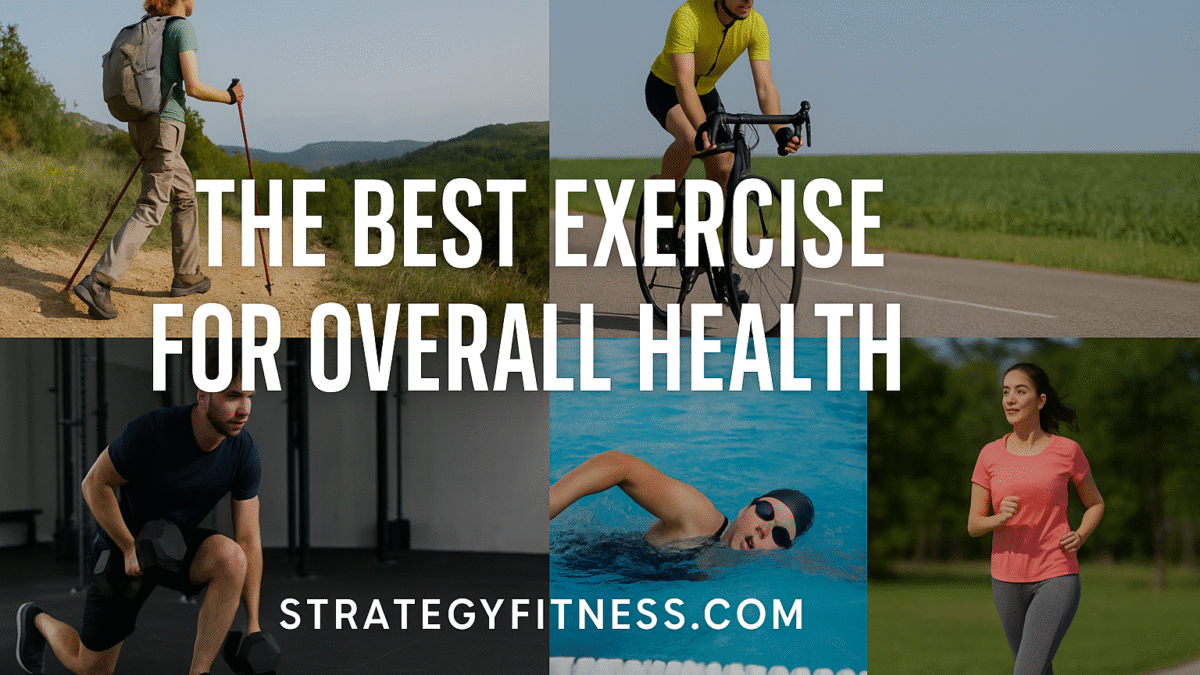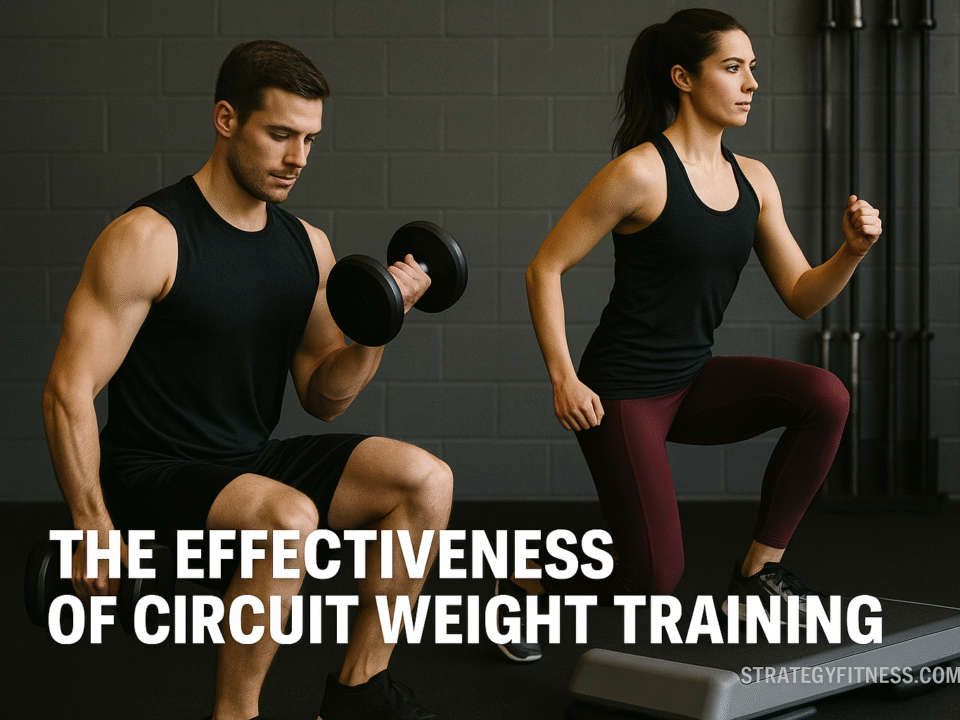
The Power of Circuit Weight Training with Cardio Steps Between Sets
October 20, 2025The 5 Core Strategies for Lifelong Fitness: Which Is Truly Best for Overall Health?
When it comes to staying fit, few topics generate as much debate as which type of exercise delivers the greatest overall benefit. Some swear by the mindfulness of hiking, others love the efficiency of circuit training, while many tout the full-body engagement of swimming. Each of these activities — hiking, biking, circuit strength training, swimming, and jogging — plays a distinct role in promoting physical and mental health.
But if you could only do one, which would be the best for overall health? Let’s examine each strategy through the lens of cardiovascular fitness, muscular strength, joint health, calorie expenditure, and long-term sustainability — and then come to a data-backed conclusion.
1. Hiking: Nature’s Built-In Trainer
Hiking is one of the most accessible and underestimated forms of exercise. It engages major muscle groups — especially the glutes, quadriceps, hamstrings, and calves — while improving cardiovascular endurance through prolonged moderate exertion. The uneven terrain of hiking trails naturally enhances balance, stability, and proprioception, which are crucial for aging well and preventing injuries.
Health Benefits of Hiking:
-
Improves heart health and lowers blood pressure through steady-state aerobic activity.
-
Strengthens core and stabilizing muscles, reducing fall risk.
-
Burns between 400–700 calories per hour depending on incline and speed.
-
Reduces stress and enhances mood through exposure to nature and sunlight (boosting serotonin and vitamin D).
From a mental health standpoint, hiking is one of the most therapeutic activities available. Research from Stanford University found that 90 minutes of walking in nature decreased activity in the brain region associated with rumination and depression. Unlike gym workouts, hiking provides both aerobic benefit and emotional restoration — a powerful combination for lifelong wellness.
Limitations:
Hiking can be weather-dependent, and those with knee or ankle issues may find steep terrain difficult. However, walking poles and proper footwear significantly reduce joint strain.
2. Biking: Endurance, Power, and Efficiency on Two Wheels
Cycling is one of the most efficient ways to improve cardiovascular health without excessive joint impact. Whether performed outdoors or indoors, biking develops the lower body — particularly the quadriceps, hamstrings, and calves — while providing a sustained aerobic challenge.
Health Benefits of Biking:
-
Strengthens heart and lungs, lowering risk of cardiovascular disease.
-
Burns roughly 500–900 calories per hour, depending on intensity and terrain.
-
Enhances leg endurance and VO₂ max, an indicator of aerobic fitness.
-
Low-impact and joint-friendly, making it suitable for older adults or those recovering from injuries.
Regular cycling improves metabolic efficiency and supports fat loss while preserving muscle mass. It’s also highly scalable — a light leisure ride offers relaxation, while high-intensity interval sessions deliver elite-level conditioning.
Limitations:
Cycling primarily works the lower body and does not significantly engage upper-body muscles or bone density. Long rides can also cause posture-related strain on the neck and lower back if bike fit is poor.
3. Circuit Strength Training: The Hybrid Powerhouse
Circuit training — alternating strength and cardio exercises with minimal rest — is often considered the ultimate “bang-for-your-buck” workout. It combines the benefits of resistance training and cardiovascular conditioning in one efficient session.
Health Benefits of Circuit Strength Training:
-
Increases lean muscle mass, boosting resting metabolism.
-
Enhances cardiovascular endurance through continuous movement.
-
Supports bone density, joint strength, and overall functional fitness.
-
Burns approximately 400–600 calories per hour, with higher post-workout calorie burn due to EPOC (Excess Post-Exercise Oxygen Consumption).
Studies published in the Journal of Strength and Conditioning Research show that circuit-based resistance workouts improve both muscular and aerobic capacity — making it a rare form of exercise that covers nearly every dimension of fitness.
In addition, resistance-based exercise is directly linked to slower biological aging and improved insulin sensitivity. It also plays a critical role in preventing sarcopenia (age-related muscle loss), which is vital for maintaining mobility and independence later in life.
Limitations:
Circuit training requires basic equipment or gym access, and improper form can lead to overuse injuries. Beginners should focus on technique before intensity.
4. Swimming: The Total-Body Conditioner
Swimming is often called the “perfect exercise,” and with good reason. It simultaneously works the upper and lower body while minimizing joint stress due to buoyancy. Swimmers benefit from both cardiorespiratory endurance and muscular toning, particularly in the shoulders, back, and core.
Health Benefits of Swimming:
-
Works nearly every muscle group while improving flexibility.
-
Burns around 500–800 calories per hour, depending on stroke and intensity.
-
Improves lung capacity and breathing control.
-
Excellent for joint health, recovery, and individuals with arthritis or mobility issues.
According to research from the International Journal of Aquatic Research and Education, swimming enhances vascular health, reduces inflammation markers, and improves sleep quality.
Additionally, the rhythmic breathing and repetitive motion have meditative qualities that calm the nervous system and reduce anxiety. It’s one of the few workouts where you can get a full-body, low-impact conditioning session without stressing your joints.
Limitations:
Access to a pool can be a barrier, and swimming technique requires practice. It also lacks the load-bearing impact necessary for optimal bone health unless supplemented with resistance training.
5. Jogging: The Classic Cardio Foundation
Jogging remains a cornerstone of aerobic fitness. It strengthens the heart, improves endurance, and supports weight management. Regular runners exhibit lower resting heart rates, improved blood pressure, and better glucose regulation.
Health Benefits of Jogging:
-
Burns 500–900 calories per hour depending on pace and body weight.
-
Strengthens bones through repetitive ground impact (important for bone density).
-
Enhances cardiovascular efficiency and endurance.
-
Boosts endorphins, leading to improved mood and reduced anxiety.
A British Journal of Sports Medicine review found that even short jogging sessions (50 minutes per week) significantly reduce all-cause mortality risk. For many, jogging is also a form of active meditation, providing clarity and emotional reset.
Limitations:
Jogging can be hard on the knees and hips for those with joint problems, especially without proper footwear or soft terrain. It also lacks resistance training’s muscle-building benefits.
Evaluating the 5 Strategies: Key Health Dimensions
| Fitness Dimension | Hiking | Biking | Circuit Training | Swimming | Jogging |
|---|---|---|---|---|---|
| Cardiovascular Health | ★★★★☆ | ★★★★★ | ★★★★☆ | ★★★★★ | ★★★★★ |
| Muscular Strength | ★★★★☆ | ★★★☆☆ | ★★★★★ | ★★★★☆ | ★★☆☆☆ |
| Joint & Bone Health | ★★★★☆ | ★★★★★ | ★★★★★ | ★★★☆☆ | ★★★★☆ |
| Mental Health & Stress Relief | ★★★★★ | ★★★★☆ | ★★★★☆ | ★★★★★ | ★★★★☆ |
| Accessibility & Longevity | ★★★★★ | ★★★★☆ | ★★★★☆ | ★★★☆☆ | ★★★★★ |
Scoring scale: 1 = Low, 5 = High
The Verdict: Which Is Best for Overall Health?
While all five strategies contribute to a balanced fitness routine, one stands out for total health coverage — both body and mind.
🏆 Winner: Circuit Strength Training
Here’s why:
Circuit strength training uniquely blends aerobic conditioning, muscle preservation, metabolic health, and functional movement — the four pillars of lifelong fitness. It enhances heart health like jogging, strengthens muscle and bone like weightlifting, and offers mental benefits comparable to hiking or swimming.
Unlike single-focus activities, it trains your body to perform efficiently under both strength and endurance demands. Moreover, it supports longevity and independence by preserving lean muscle, improving posture, and reducing injury risk — all while burning significant calories.
That said, the best exercise is the one you’ll stick with. For many, hiking or biking may provide more enjoyment and consistency. The key is to stay active, mix variety when possible, and prioritize form, safety, and recovery.
Final Thoughts: Move Often, Move Intelligently
Your body doesn’t know if you’re in a gym, on a trail, or in a pool — it knows movement. Hiking feeds the soul, swimming heals the joints, biking builds endurance, jogging fuels the heart, and circuit training unites them all.
If your goal is optimal overall health, start with circuit strength training as your foundation — then add elements of nature, endurance, and recovery to create a balanced, sustainable fitness lifestyle.
Written for:
🧠 StrategyFitness.com — by Stuart Morris
Empowering everyday people to move smarter, feel stronger, and live longer.




